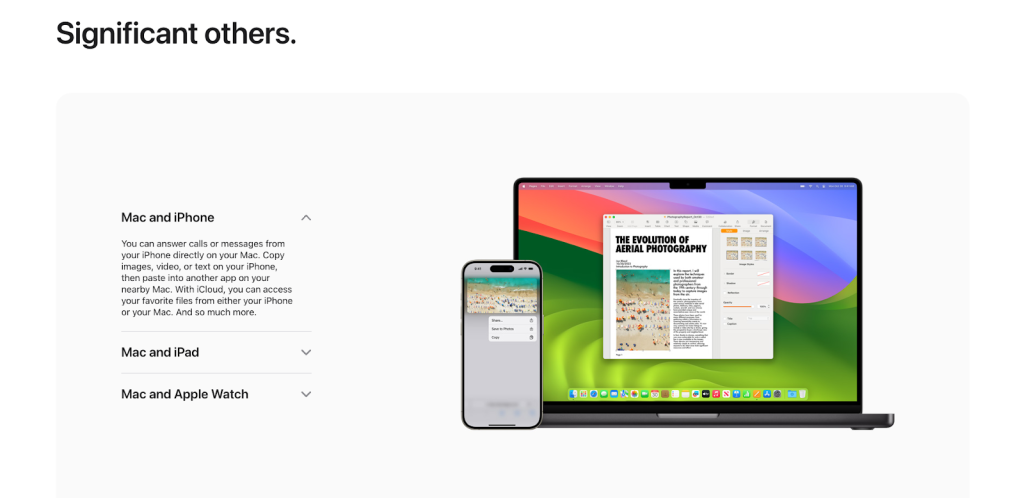The Power of Developing a Specific Brand Voice

What do classic characters such as Yoda, Elle Woods, and the Wicked Witch of the West have in common with Christopher Walken, Mae West, and Vincent Price? They all have a highly distinctive way of speaking. You might argue it’s what makes them iconic. Similarly, the world’s most recognizable brands have a unique voice. They don’t sound like their competitors — or anyone else, really.
And that’s vital to their success. Let’s be honest, we’ve all seen and heard “company-speak,” and it’s not cute. It comes off as insincere and generic, like all they want from you is your money. Small- to medium-sized enterprises especially need to build trust among their audience. A distinctive voice makes that possible. So as Yoda would say, develop a specific brand voice you must.
Here’s why — and how — to refine your brand’s personality, from overall attitude to copywriting style.
From Personality to Popularity: Creating Your Brand’s Image
What is a brand voice?
Back up a bit. First, let’s define “brand.” When people say something is “brand name,” they mean it’s made by a company they recognize. The quality is a moot point: the recognition is what captures interest — and fetches a higher price tag.
So, a brand is something recognizable. We remember it because it stands out; it has made an impression on us. Again, this doesn’t necessarily reflect quality. A brand can be recognizable for a bad impression. (Remember New Coke? Or for our younger folks…Spirit Airlines.)
Your goal is to make a great impression. That will define your brand and the shape it takes in your ideal customer’s head.
Ask yourself:
- What do people think of when they hear your company name?
- How do they feel when they interact with your team members or even your content?
- What are their expectations for your products or services?
- Can they quote your tagline or slogan?
If you’re not sure, try this: Imagine your brand as a person. How would they talk? Are they the protective older sibling? The wise professor who sparks your curiosity? The hyper friend who always gets the party started?
You definitely wouldn’t want your brand to be the “Negative Nancy,” snobby coworker, or annoying little sibling!
Similarly, your brand identity plays a big role in your impression. If you’re the thought-provoking mentor, what kind of impression does that leave? People probably think of your brand as inspiring, helpful, and classy. If you’re the energetic BFF, people probably feel confident, excited, and supported around you.
Before you can define your brand voice, you must define your brand personality. This is more than what you do, where you’re based, and all that nitty-gritty stuff. It’s somewhat abstract, but it usually boils down to a combination of:
- Your core values/tenets: how you make decisions, what motivates you
- Your mission and vision: what you do and what you want to achieve for yourself, your customers, and your industry
- Your value proposition: the value you propose to your ideal customers
Perhaps you’ve already done this level of soul-searching. Great! It’s time to translate those values, goals, and attitudes into your brand voice — a distinctive way of speaking that leaves that good brand impression. Remember, the wise mentor Yoda doesn’t talk like the rugged protector Han Solo or the gracious leader Leia.
In sum, a clear brand voice starts with a notable brand personality — hopefully one that makes a great impression!
How to Create Your Brand Voice
To create your brand voice, start with some wordplay. Don’t worry, you don’t have to be a writer to do this. Let’s begin by exploring the most recognizable aspect of a famous brand: the tagline.
The tagline is the short phrase that perfectly captures a brand’s value proposition. Don’t confuse it with a slogan, which is the headline of an advertising campaign.
| Famous Taglines | Famous Slogans |
|---|---|
| What’s in your wallet? (Capital One) Think different (Apple) Like a good neighbor, State Farm is there. That was easy. (Staples) Just do it (Nike) Finger-lickin’ good (Kentucky Fried Chicken) Breakfast of champions (Wheaties) You’re in good hands (Allstate) | “There are some things money can’t buy. For everything else, there’s MasterCard.” “So easy a caveman could do it.” (GEICO) “Got milk?” (California Milk Processor Board) “Can you hear me now”? (Verizon) “It keeps going, and going, and going…” (Energizer) |
The combination of phrasing, punctuation, diction (word choice), and mood makes these phrases unique and memorable. It also sets a standard for the overall brand voice.
Brand writing examples
For example, State Farm’s neighborly tone and confident attitude play out in its captions:

Check out the caption for this Instagram reel: “Rapping doesn’t help your busted faucet. The jingle does.” It’s a sly nod to the promise expressed in their tagline.
Notice how State Farms writes in second person (“you,” “your”) to keep the focus on their audience. They use action-oriented language, e.g. “[Do] screenshot, Don’t let a Monday get you down.”
Make these decisions now for your brand voice. If you’re the protective older brother, would you ask a lot of questions? Or would you lead with strong statements, like State Farm does?
Let’s say your brand personality is quirkier like Progressive. You’re the energetic best friend, so you probably use zippy phrases and a more inquisitive tone.
Also, what kinds of words do you use? Do you keep it short and sweet? Do you lean into common sayings? Or is your way of speaking more poetic or academic?
Take a look at a brand that’s made its name with a more elevated personality style. Apple’s lofty, grammar-bending tagline gets reflected in the aspirational wordplay seen on its website:


Notice the use of periods, even at the end of sentence fragments. This adds to the dramatic impactful attitude that defines Apple’s brand personality. When crafting your brand voice, be sure to create guidelines for punctuation. Should you use a lot of question marks? Don’t forget exclamation points! And perhaps even an interrobang‽
As these examples show, your brand voice has a unique combination of copywriting principles.
Brand writing style checklist
- Sentence/phrase structure and rhythm
- Voice (first, second, or third person)
- Vocabulary choice
- Punctuation rules
- Mood (indicative, imperative, or interrogative, aka statements, commands, or questions)
- Tone (confident, curious, helpful, etc.)
Follow these principles to make sure your business always sounds like your brand, whether you’re posting on social media, talking to a potential customer, or updating your website. A successful brand voice comes from the three C’s of branding:
- Clarity: You are who you say you are, and people know who that is
- Consistency: People trust that you’ll always show up the same way
- Constancy: You constantly express your key values and messages
An inconsistent, muddled voice — or just generic company-speak — can make you seem boring at best, insincere at worst. That’s never good for your brand impression. Keep your voice clear, consistent, and constant!
Putting Your Brand Voice into Action
So, you’ve done your soul-searching, nailed your brand personality, and created your brand voice. You’ve even got some brand writing rules jotted down. Bravo!
Now what?
Your brand voice should infuse every interaction you have with your target audience. When it’s both distinctive and aligned with your mission and values, you’re more likely to resonate with your ideal customer. Remember, your brand is your reputation, which results from the impression you leave. Don’t try to pick up a trendy brand voice like Wendy’s if it doesn’t make sense for your business. Follow the advice of every feel-good kids’ movie ever: Be yourself! It’s always good advice.
You might find that your brand voice even inspires some content ideas. See how Capital One leans into its tagline, “What’s in your wallet?” to spark people’s curiosity — and encourage them to “treat yo’self!”









